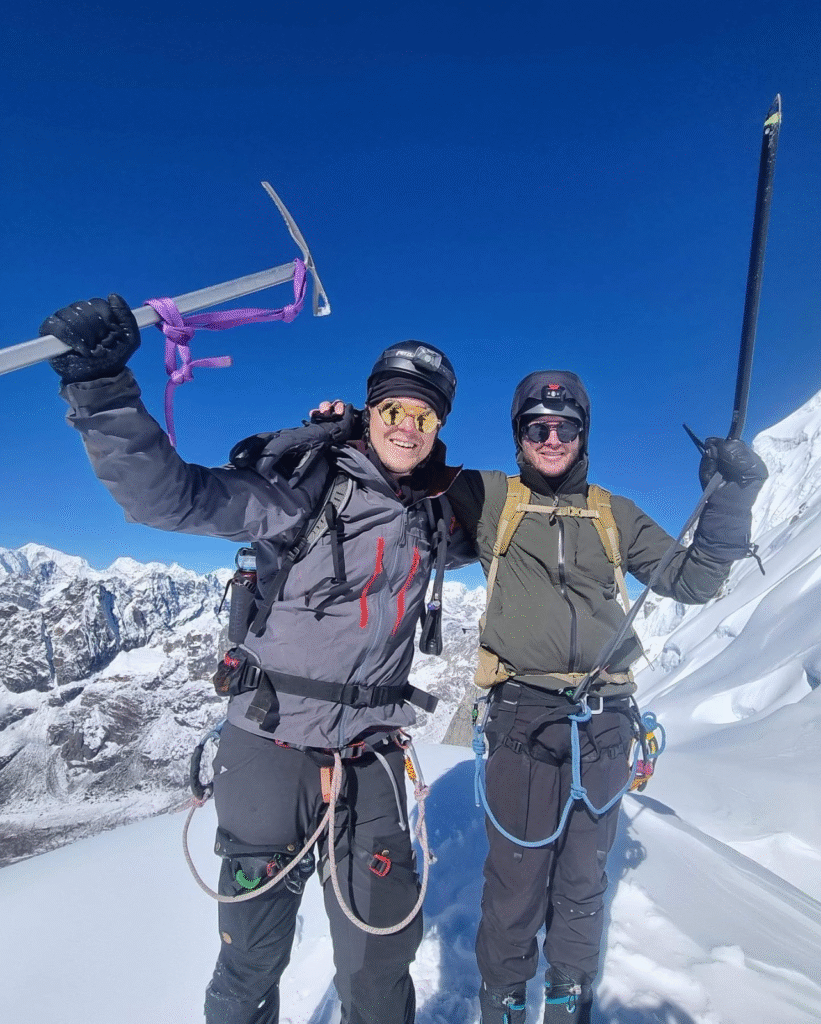
The Himalayas have long captured the imagination of adventurers around the world. While Mount Everest often steals the spotlight, Nepal’s lesser-known yet equally inspiring trekking peaks—Lobuche Peak, Mera Peak, and Island Peak—offer unique challenges, unforgettable scenery, and a deep sense of accomplishment. Each of these 6,000-meter peaks brings something different to the table—technical skill, physical endurance, or scenic beauty—and appeals to climbers of all levels.
Let’s explore each of these majestic climbs, with each described in a different writing style to match its personality and experience.
Lobuche Peak: A Precise Climber’s Ascent
Lobuche East Peak, standing tall at 6,119 meters, is a technically engaging climb that lies close to the classic Everest Base Camp trail. Divided into two summits—Lobuche East and Lobuche West—only the East is permitted for trekking peak climbers. This peak is often chosen by mountaineers looking to push their skills on snow, ice, and mixed terrain.
The route typically starts with acclimatization on the Everest trail, through Namche Bazaar, Tengboche, and Dingboche, before setting up base at Lobuche Village. From there, a high camp is established around 5,400 meters on a rocky plateau. The summit day begins early and includes glacier travel, steep snow slopes (up to 45–50 degrees), and a final exposed ridgeline that often requires fixed ropes and careful footwork.
Unlike many trekking peaks, Lobuche demands a good understanding of alpine climbing. The ascent features rock scrambling and icy patches that challenge a climber’s balance and technique. Gear such as harnesses, ice axes, ascenders, and helmets are essential.
The reward from the summit is worth every step—sweeping views of Mount Everest, Lhotse, Nuptse, and Ama Dablam, with the Khumbu Glacier sprawling below. Because of its advanced terrain and elevation, Lobuche Peak is often used as a training ground for more formidable summits, such as Ama Dablam or even Everest.
Mera Peak: A Trekker’s Epic Story Above the Clouds
You wake before dawn at Mera High Camp. The air is cold, the wind whispering over the snow in the faint light. You sip tea from a flask, nerves humming with a mix of anticipation and exhaustion. Today is summit day—your journey to the top of Mera Peak, the highest trekking peak in Nepal at 6,476 meters.
Your story began more than a week ago, walking through lush rhododendron forests, over suspension bridges, and into the wide Hinku Valley. Unlike the busy Everest region, here the trails are quieter, the mountains more mysterious. The climb to Khare—the last village before the mountain—tested your endurance, but the wildness of the landscape and the warmth of the Sherpa people kept you going.
Now, with crampons biting into the glacier, you begin the slow, steady climb. The slope isn’t technical, but the thin air weighs on your legs. Every step is deliberate, measured. Hours pass in near silence, broken only by the crunch of snow and the rhythmic sound of your breath.
Finally, the summit ridge appears. You take the last few steps, and then—there it is. The world opens up in all directions. Everest, Lhotse, Makalu, Cho Oyu, and even Kanchenjunga glow in the morning light. The view is vast, humbling, and magnificent. You realize that this journey wasn’t just about the summit. It was about discovering how far your spirit could go.
Mera Peak may not be the most technical mountain, but it tells a powerful story. It’s a journey of endurance, of solitude, and of personal triumph. One you’ll never forget.
Island Peak: Your First True Himalayan Climb
Are you ready to move beyond trekking and step into the world of mountaineering? Then Island Peak (Imja Tse) is calling your name. Standing at 6,189 meters, this stunning peak offers the perfect combination of adventure, challenge, and reward—making it one of the most climbed peaks in Nepal for a reason.
Why is Island Peak so popular? Because it gives you a real mountaineering experience—without requiring months of training or professional-level skills. You’ll use fixed ropes, cross glaciers, and climb a steep snow headwall near the summit. It’s a true alpine climb, but completely achievable with the right guide and preparation.
The climb fits perfectly into a classic Everest Base Camp itinerary. After acclimatizing on the main trail—passing legendary spots like Namche Bazaar and Tengboche—you’ll branch off into the scenic Imja Valley. Your base camp is set just beneath the mighty Lhotse wall, and summit day is a thrilling mix of rock, snow, and ice. Imagine climbing under the stars, watching the sun rise over the Khumbu region, and standing on a ridge with the whole world at your feet.
From the top, the views are simply breathtaking. You’ll be surrounded by Himalayan giants: Lhotse, Ama Dablam, Baruntse, and Makalu. For many, Island Peak is the first taste of true Himalayan climbing—and it leaves them craving more.
So if you’ve trekked before and want something bigger… if you want to test your limits and learn mountaineering skills in the shadow of Everest… Island Peak is your peak. Book the climb, train hard, and get ready for one of the most rewarding adventures of your life.
Which Peak Is Right for You?
| Peak | Altitude | Style | Best For |
| Lobuche | 6,119 m | Technical/mixed | Experienced climbers or EBC trekkers looking for challenge |
| Mera | 6,476 m | Endurance-focused | First-time climbers, remote trekkers seeking high altitude |
| Island | 6,189 m | Technical intro | New mountaineers, EBC extension with glacier/rope work |
Each peak serves a different purpose. Lobuche is great for advanced trekkers ready to handle mixed snow and rock. Mera tests your endurance in a quieter, wild setting. Island Peak introduces you to technical climbing without overwhelming difficulty.
Final Thoughts: The Himalayan Trifecta
Climbing Lobuche Peak, Mera Peak, or Island Peak is more than a physical accomplishment—it’s a personal milestone. Each peak offers a different lens through which to view the Himalayas: one through the sharp edge of skill, one through the quiet challenge of endurance, and one through the excitement of first-time adventure.
Whether you’re looking to sharpen your mountaineering skills, step into your first high-altitude summit, or embark on an unforgettable wilderness trek, these peaks await with open arms. Choose the one that fits your spirit—or climb all three and discover the full spectrum of what the Himalayas have to offer.
Contact Details
———————
Company address: Everest Trekking Routes Pvt. Ltd.
16 Khumbu, Nayabazaar, Kathmandu, Nepal
Mobile : +977-9843467921 (Rabin)
Email: info@everesttrekkingroutes.com
URL:- www.everesttrekkingroutes.com
